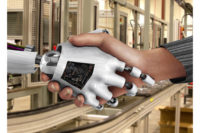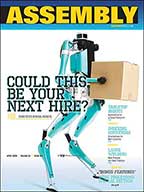Toy manufacturers are faced with increasingly stringent safety regulations and constantly changing consumer tastes. When the industry gathers next month for the annual toy fair in Nuremberg, Germany, many companies will be unveiling new “edutainment” products.
“The most dramatic shift in the toy industry isn’t a toy,” claims Daniel Berch, director of Pell Research. “Rather, games and children’s apps for smart phones and tablets are drawing increasingly young users, particularly as device costs go down.”
A recent study conducted by Common Sense Media, an advocacy group,discovered that 38 percent of children under two years old have already used mobile devices like smart phones and tablets for playing games, watching videos and other media, an increase from 10 percent two years ago. The study also found that 75 percent of kids eight and older have used these devices, which is twice as many as in 2011.
Berch and other industry observers expect to see the amount of electronic content in toys increase in the future. “However, smart phones and tablets coupled with kid-friendly apps will continue to encroach on this territory, and traditional toy makers are competing against software developers in a market they have less experience in,” he points out.
One way that traditional toy manufacturers are addressing this challenge is by using the concept of mass-customization is to exponentially increase variety without increasing costs.
“Toy manufacturers are likely to use this [strategy] to create personalized products, target niche markets and stimulate demand,” notes Berch. “Already, Mattel's My Design allows custom dolls, where users can customize and view [designs] on a web site before ordering. Lego also allows custom configurations of several toys.”
Another tool that’s helping toy manufacturers compete with high-tech devices is 3D printing. Additive manufacturing is transforming the toy development process.
“3D prototyping has reduced development time from a year to three months,” claims Berch. “This will enable even greater diversity in products, as well as lower development costs.”
The $84 billion toy industry remains highly fragmented and extremely competitive. Giants such as Hasbro and Mattel dominate the industry with well-known brands such as Fisher-Price, Hot Wheels, Nerf and Playskool.
“However, those companies only control 25 percent of the market,” says Sean Windle, an analyst at IBISWorld Inc. “The remainder of the industry is characterized by a large number of small- and mid-sized companies. The [majority of them] employ fewer than 10 workers each.”
In fact, many toy fads are started by small mom-and-pop companies that find a niche that the big players miss. For instance, one of this year’s hottest toys is the Rainbow Loom. It was the brainchild of a former Nissan engineer who started making the popular rubber band looms in his suburban Detroit basement a few years ago. Today, the company operates out of a 7,500-square-foot warehouse in Wixom, MI, and employs 15 people.
While the toy industry is prone to fads, it’s also susceptible to fakes. Indeed, the Rainbow Loom has inspired lots of similar products (and lawsuits), such as the Cra-Z-Loom and the Loop ‘N Loom.
But, that’s nothing new in the toy world. Back when the first issue of ASSEMBLY magazine was rolling off the printing press in the late 1950s, the Hula Hoop craze was sweeping the United States. It spawned a slew of imitations, such as the Hooper Dooper, the Spin-A-Hoop, the Whoop-De-Doo and the Wiggle-A-Hoop.







